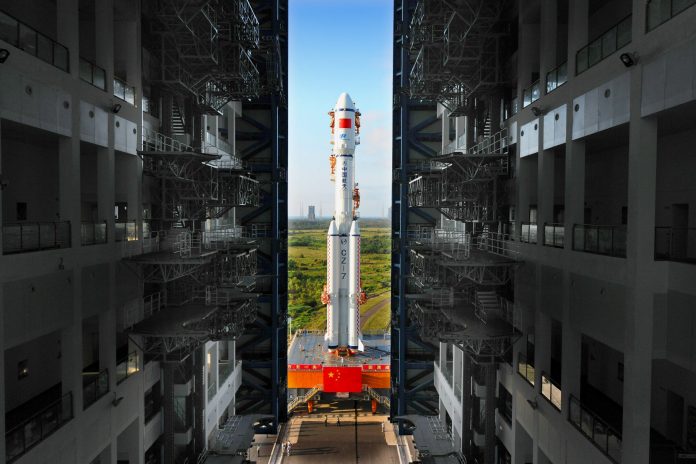
China and India vie for supremacy in the region’s space exploration programmes – from the Moon to Mars
Text Namrata Goswami
In analysing the space policies of lead Asian players like China and India, it becomes clear that both nations are increasingly focusing their efforts on a “space race” – or, more accurately, something of a “gold rush” in space. While these countries certainly have a long list of objectives they want to accomplish in space, there is no clear finish line, neither is there a definitive time frame.
Their approach contrasts starkly with the Cold War rivalry between the United States and the former Soviet Union, where getting there first mattered most. As a result, when the USSR’s Sputnik 1 burst into the skies in 1957, there was a lot of handwringing at NASA. Yuri Gagarin’s tryst with space destiny was a heartbreaker for the US space programme, which subsequently spurred the race to the Moon and the Apollo programme.
In comparison, the race for space among the Asian exploration programmes is not about simply getting to the finish line first. The long-term goals set by these nations are not focused on who plants their flag first.

They are more focused on space activity – accomplished on as lean a budget as possible. India took great pride in successfully launching their Mars orbiter, Mangalyaan, in 2013 with a meagre overhead cost of USD70 million, compared to the USD671 million spent by the US on launching their Mars orbiter, Maven.
The low cost of India’s Mars orbiter could potentially draw in lucrative customers to its space programme, particularly noteworthy in a newly competitive environment that has seen the entry of private commercial actors like Space X, Moon Express and Blue Origin. The Indian Space Research Organisation (ISRO) announced a second Mars mission by 2020–21, and a first probe to Venus.
While prestige and nation building are certainly significant aspects of these Asian countries’ advances beyond our planet, China and India have both connected their space activities to their economic developmental goals. Among the leading space-faring powers in the region, one head of state offered an expansive, defined vision: India’s former president,
APJ Kalam, laid out a 50-year space plan, which encompasses all of the country’s space industrialisation and space governance ventures and ambitions.
For China, a leading Asian nation in space exploration, the potential for resources is informing, and driving, its activities. China has shown keen interest in investing in resources like space-based solar power (SBSP), asteroid mining, and lunar exploration. According to the China Academy of Space Technology (CAST), “power coming from outside of the Earth, such as solar power, and the development of other space energy resources, is to be China’s future direction”.
By 2018, China aims to launch the Chang’e-4 lunar probe to achieve a soft landing on the far side of the moon, in order to carry out topographic and geological surveys of lunar samples. In its 2016 white paper on space exploration, China stated that space exploration would “promote strong and sustained economic and social development”. By 2020, China aims to send a Mars orbiter to bring back samples for research, and also intends to conduct asteroid exploration. By 2036, China intends to send a manned mission to the Moon.

In a 2016 interview with Reuters, Lieutenant General Zhang Yulin, deputy commander of the China space programme, stated that China must “raise its abilities and use the next 15 to 20 years to realise manned lunar exploration goals, and take a firm step for the Chinese people in breaking ground in the utilisation of space”.
There is a push to encourage private space start-ups, like OneSpace and Landspace, which goes to show that the Chinese government views its space activities as beneficial to long-term economic investment.
In 2016, China overtook Russia with its 22 rocket launches, equalling the record number of launches by the US. China’s space programme fits well within its need to demonstrate prestige and great power status, while also paying economic dividends in the long run.
Like China, India has woken up to the benefits of space exploration and development, tapping into the lucrative commercial space market. In 2008, India launched its Moon orbiter, Chandrayaan, which detected water on the Moon’s surface. In February this year, ISRO launched 104 satellites on a single rocket, breaking the 2014 Russian record of 37 satellites. Of the 104 satellites, three were Indian-owned, 96 were from US-based companies, and the rest were from companies in Israel, Kazakhstan, Switzerland, the Netherlands, and the UAE. ISRO Professor Dr Sivathanu Pillai said that by 2030, India may be able to meet its energy requirements with Helium-3 mined from the Moon. India also plans to encourage privatization of its space activities. ISRO Chairman, A S Kiran Kumar recently announced that by 2020, India will privatize its Polar Satellite Launch Vehicle (PSLV) in order to improve capacity and increase rate of launches from 12 to 18 in a single year.
This Asian “gold rush” is of relevance to Japan’s space activity, too. Japan has made great strides in achieving the base technology to harvest SBSP. In March 2015, Japan’s Aerospace Exploration Agency, or JAXA, successfully transmitted electric power wirelessly to a pinpoint target utilising microwaves. This is the base technology that will be required for the transmission of SBSP to receiving stations on Earth.

SBSP taps the sun’s energy on orbit and delivers it wirelessly to Earth. SBSP is clean, global and it is renewable. Given that space has no atmosphere, is never cloudy, and has no night when it is in geosynchronous orbit, the power generated by a SBSP satellite will be constant – once the technology has been realised.
Russia has contributed immensely to augment the space ambitions of Asian nations. China has benefitted tremendously from Russia opening its space sector for commercial purposes, purchasing Russian spacecraft, and utilising their heavy lift booster technology. Vietnam, Japan, India and Malaysia sent their first astronauts into space on Russian rockets.
This rush for space resources is increasingly perceived as being grounded in strategic interests driving military growth, as rising military powers make technological advances. The use of space for reconnaissance, intelligence gathering, navigation and military communications is well known.
That said, much of the motivation for development and resource exploitation in space seems to be compelled by concerns of environmental stress, climate change, and resource scarcity. Some narratives within China and India hint at concerns about resources and their supply, ownership, control and access, as well as at potential means of coercion, should other powers dominate access to space energy, and mineral and location resources. If Asia wants conflict-free space exploration and development, it makes sense to establish an international space code to regulate space activities – sooner rather than later.
For more stories and photos, check out Asian Geographic Issue 125.










